
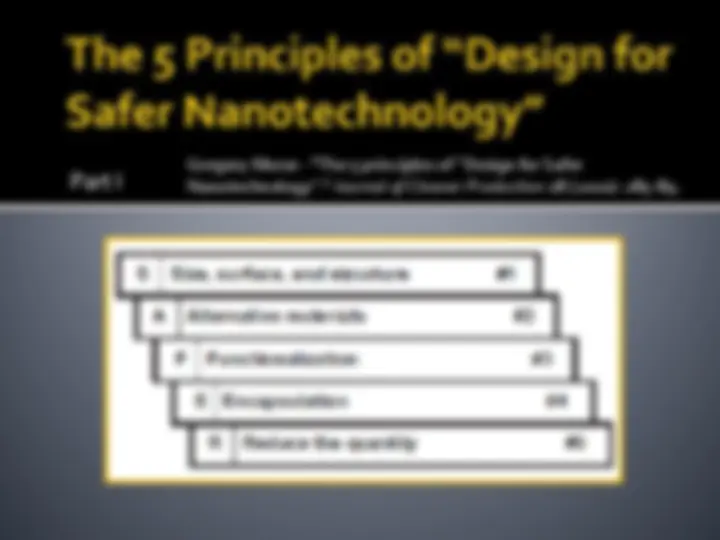
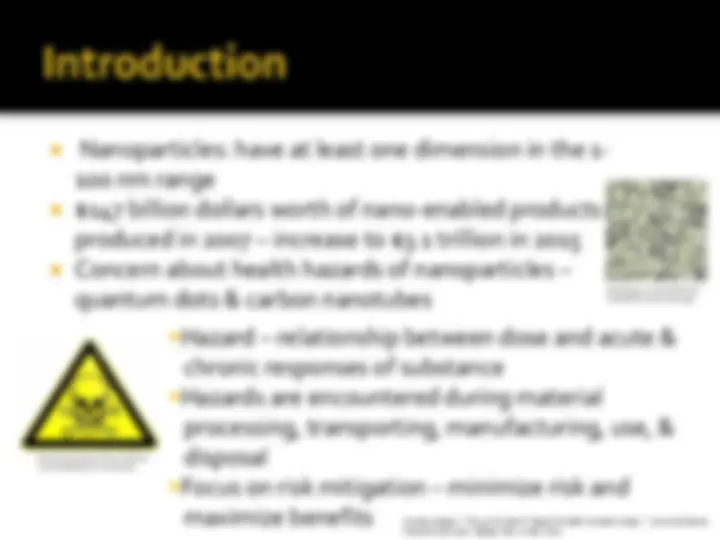
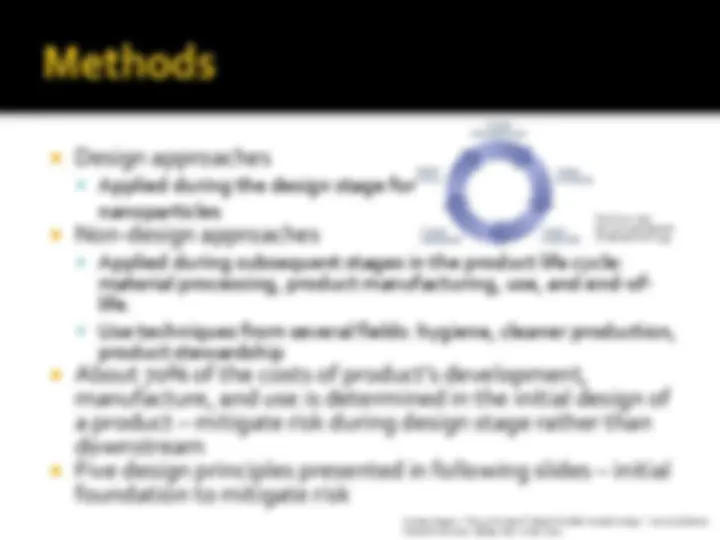
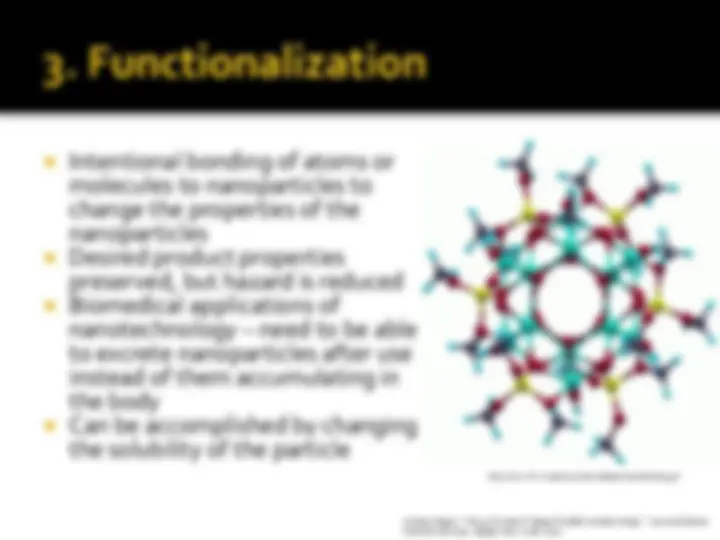
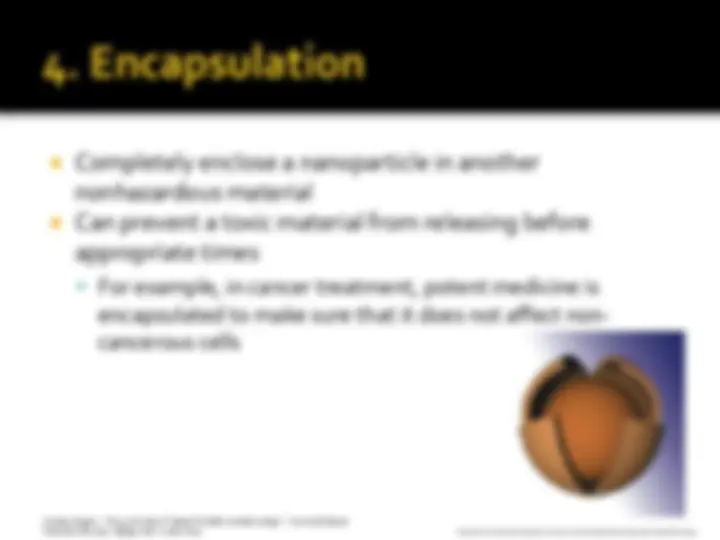
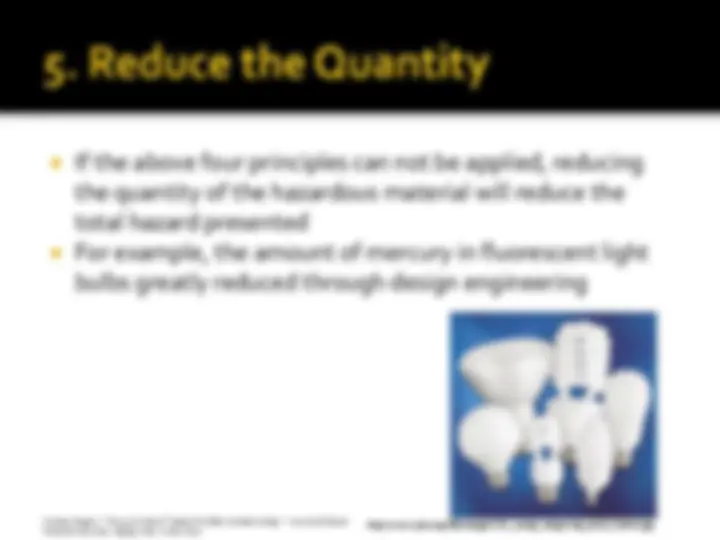
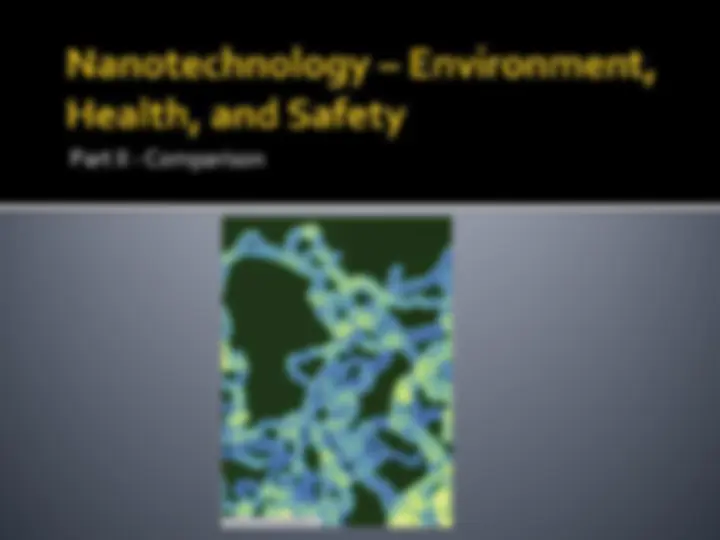
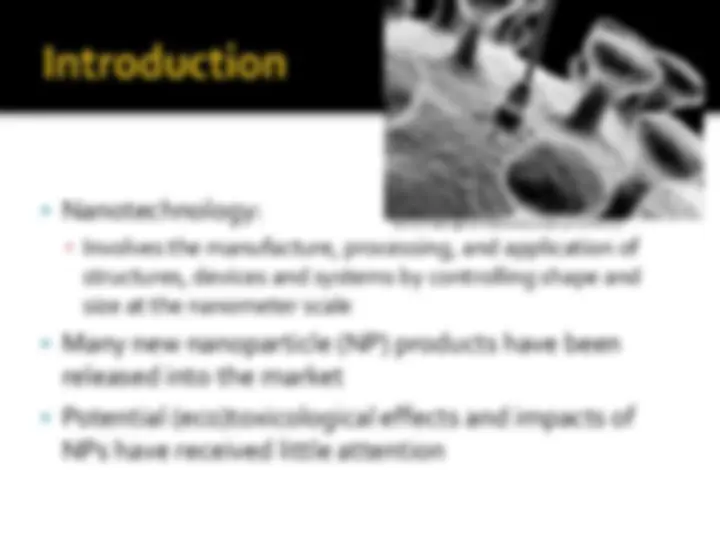
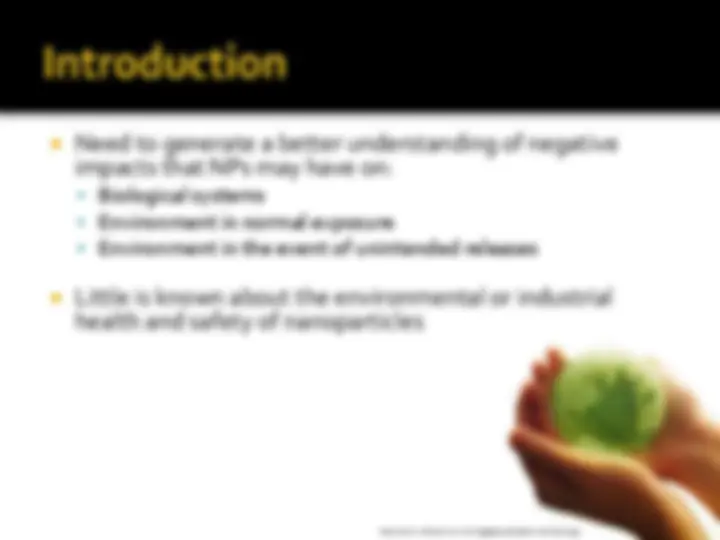
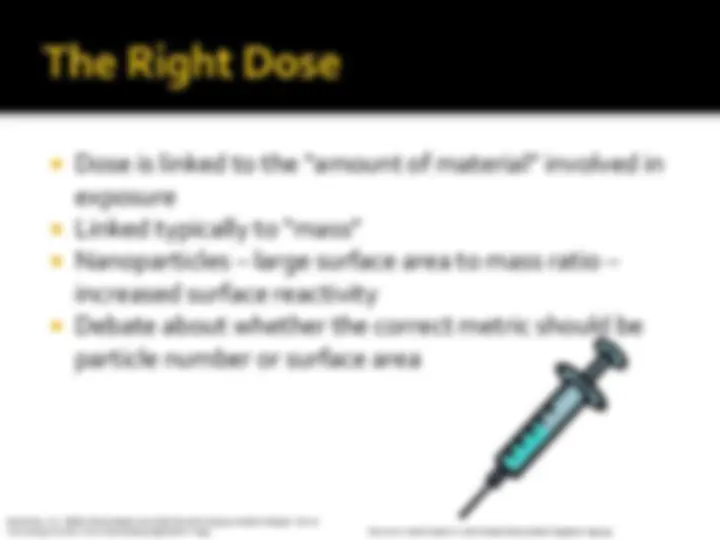
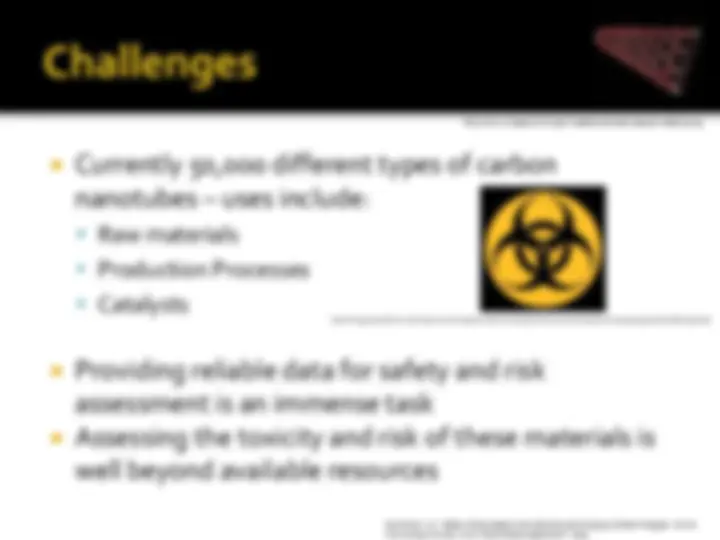
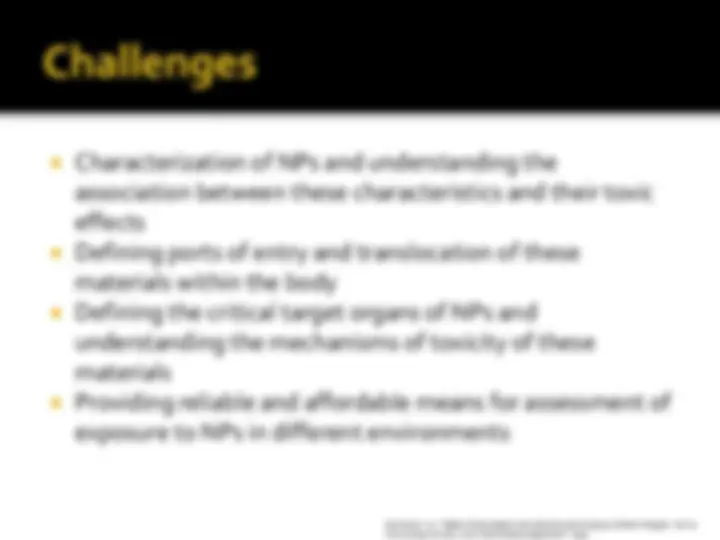
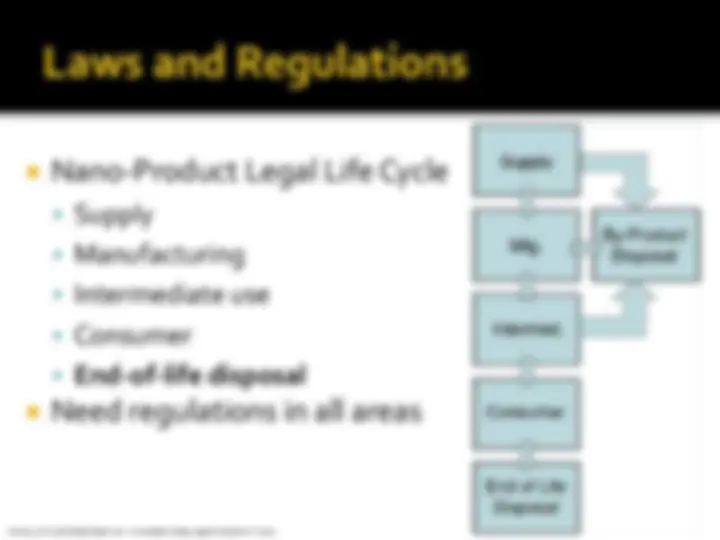
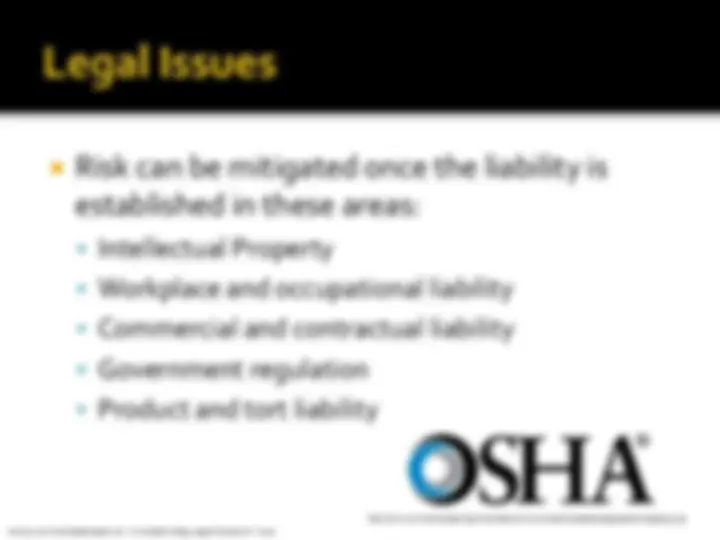
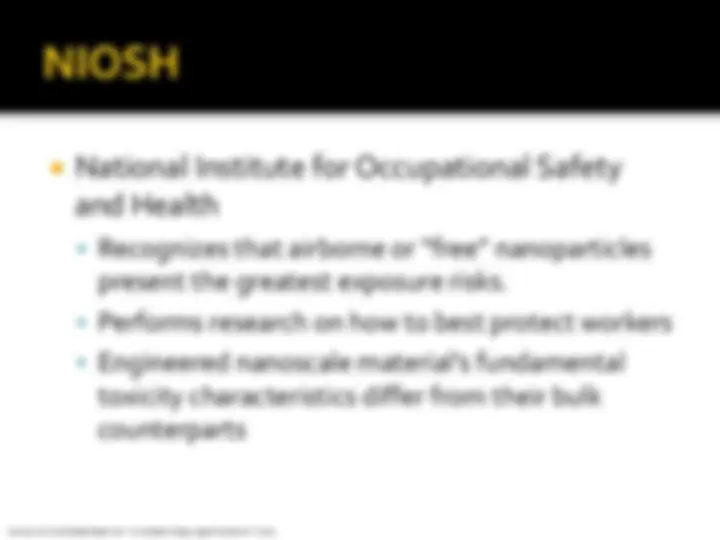
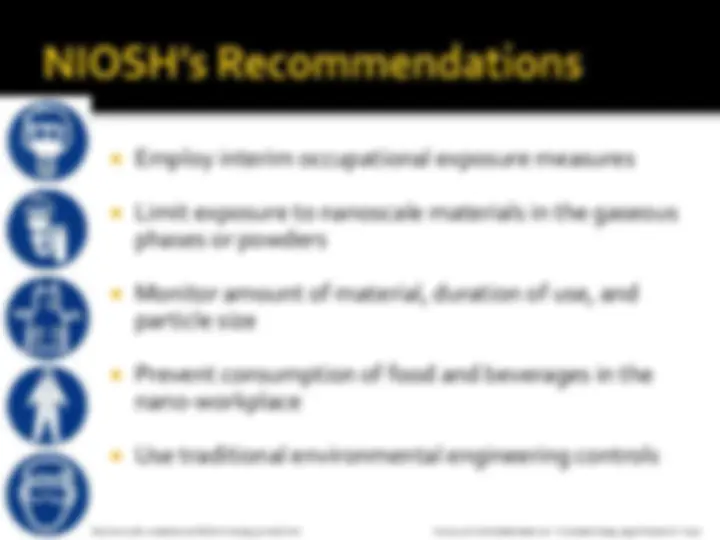
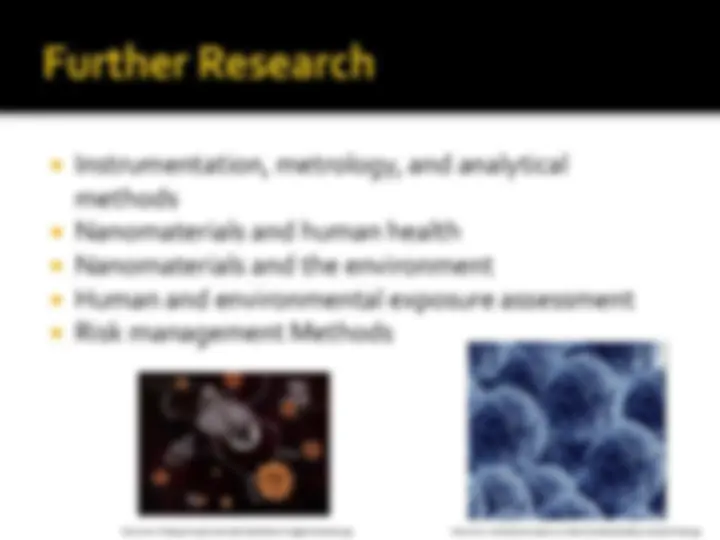
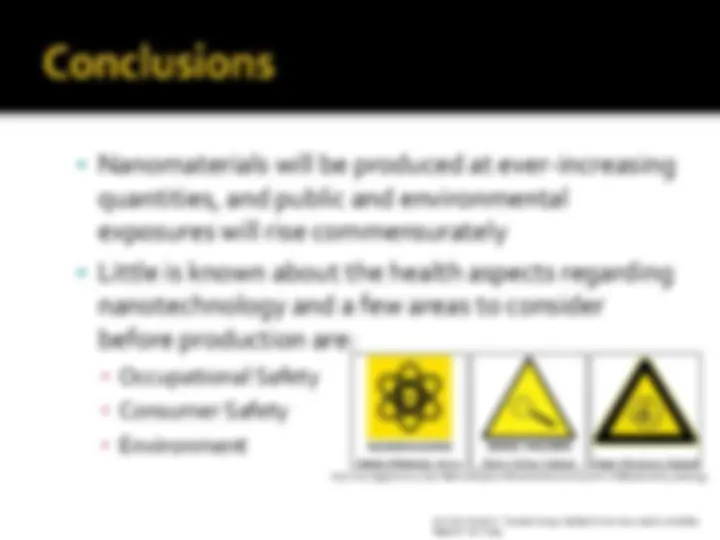

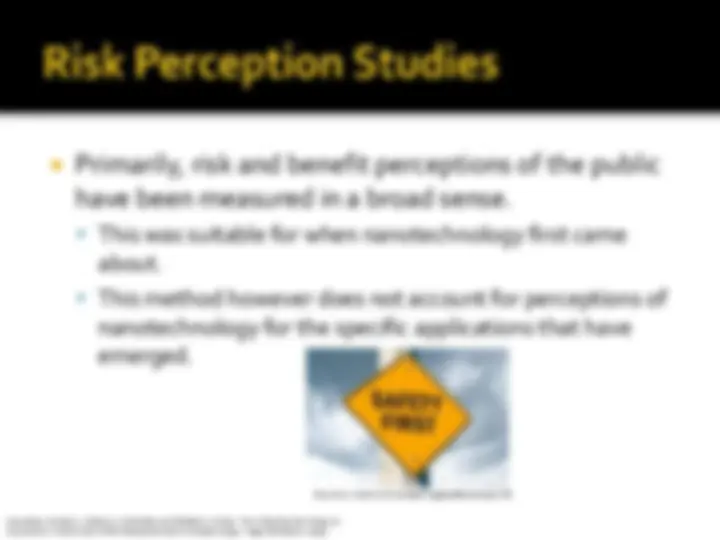
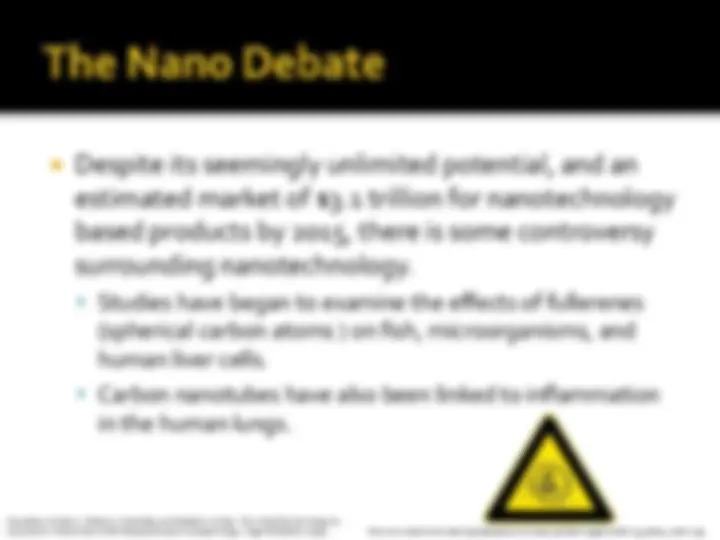
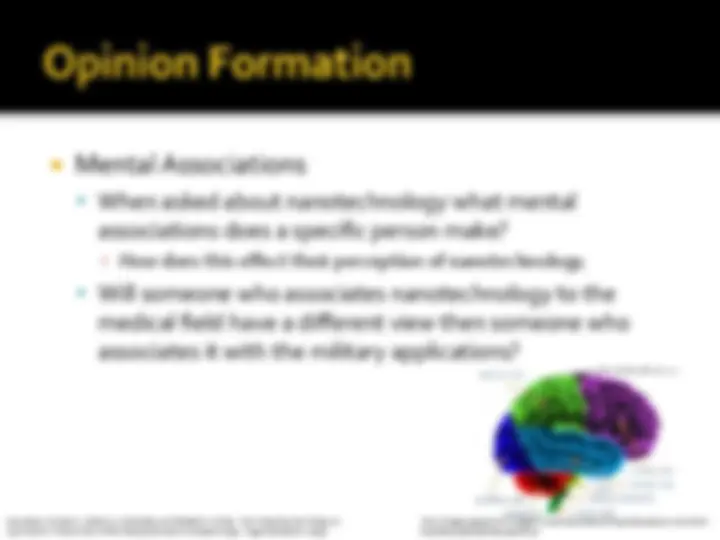
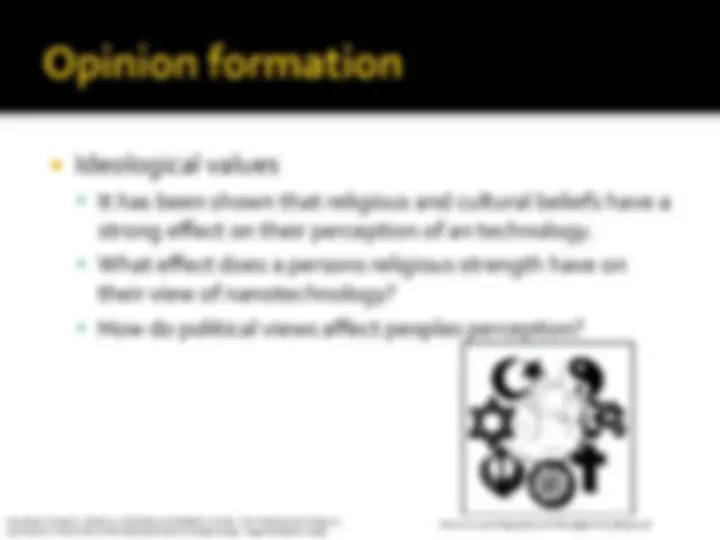
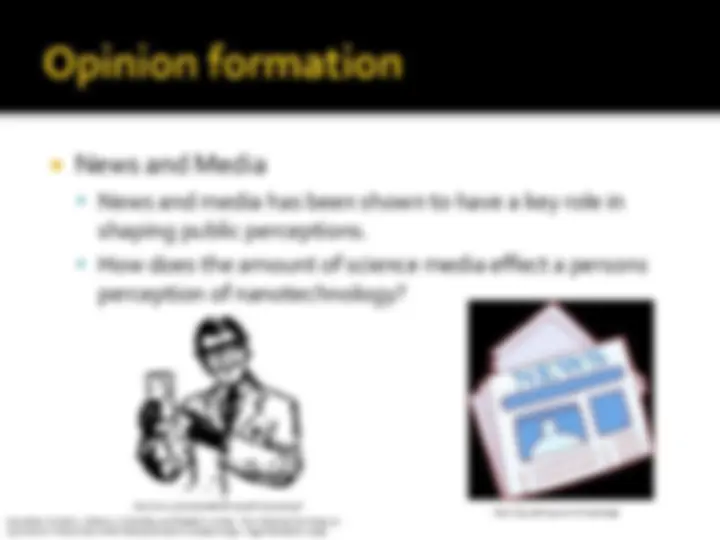
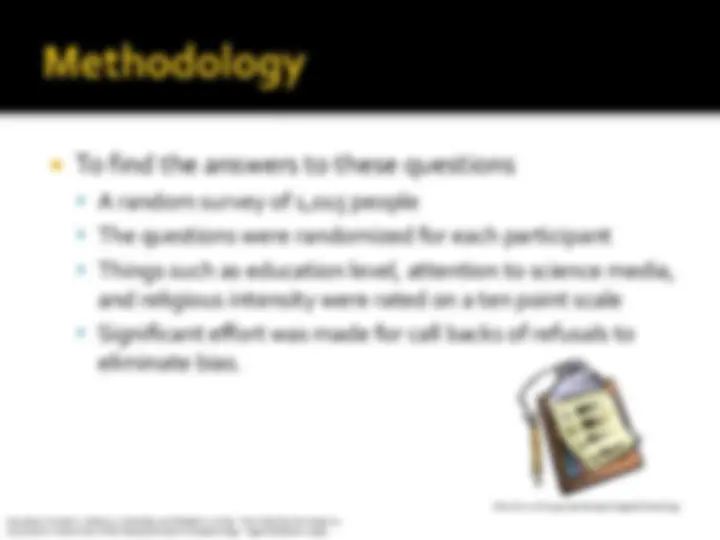

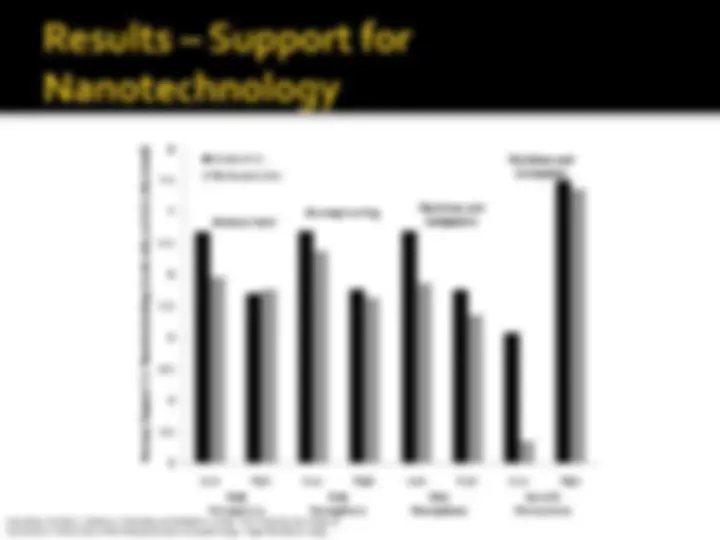
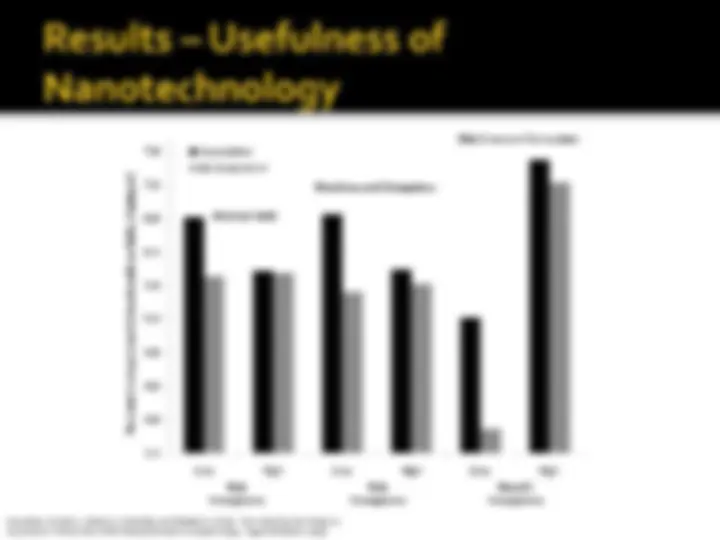
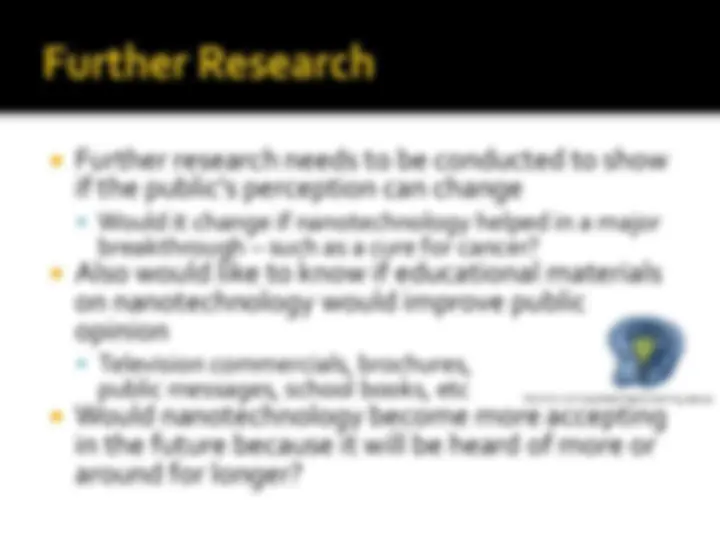
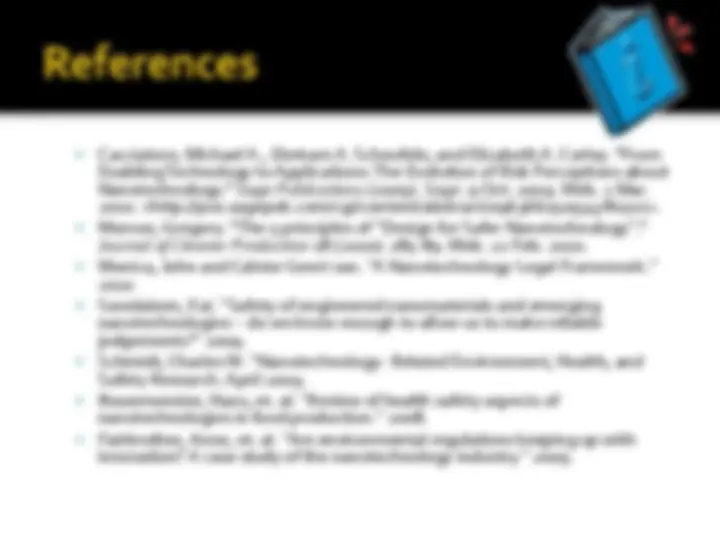


Study with the several resources on Docsity

Earn points by helping other students or get them with a premium plan


Prepare for your exams
Study with the several resources on Docsity

Earn points to download
Earn points by helping other students or get them with a premium plan
Community
Ask the community for help and clear up your study doubts
Discover the best universities in your country according to Docsity users
Free resources
Download our free guides on studying techniques, anxiety management strategies, and thesis advice from Docsity tutors
Mechanical Applications, Molecular Separation, Nano Solar Cells, Nanocatalysts, Nanoparticles in Medicine, Agriculture and Genomics, Nanotoxicology, Nanowire Photonics, NDR Molecular, Zinc Oxide Nanowire and many others topics are part of this course. Key points in this lecture are: Making Nanotechnology Safe, Methodology for Safer Nanotechnology, Environment, Health, and Safety, Laws and Regulations, Risk Perception, Public Opinion, Nanoparticles, Combination of Materials, Nonhazardous Material
Typology: Slides
1 / 38

This page cannot be seen from the preview
Don't miss anything!































Short Project (Midterm) CHEN 489
Nanoparticles: have at least one dimension in the 1- 100 nm range $147 billion dollars worth of nano-enabled products produced in 2007 – increase to $3.1 trillion in 2015 Concern about health hazards of nanoparticles – quantum dots & carbon nanotubes Hazard – relationship between dose and acute & chronic responses of substance Hazards are encountered during material processing, transporting, manufacturing, use, & disposal Focus on risk mitigation – minimize risk and maximize benefits
http://chemwebsearch.files.wordpress.com/2008/08/poison-symbol.png
http://blogs.cornell.edu/theessentials/files/2010/01/money.jpg
Morose, Gregory. "The 5 principles of ‘‘Design for Safer Nanotechnology’’." Production 18 (2010): 285-89. Web. 22 Feb. 2010. Journal of Cleaner
Design approaches Applied during the design stage for nanoparticles Non-design approaches Applied during subsequent stages in the product life cycle: material processing, product manufacturing, use, and end-of- life. Use techniques from several fields: hygiene, cleaner production, product stewardship About 70% of the costs of product’s development, manufacture, and use is determined in the initial design of a product – mitigate risk during design stage rather than downstream Five design principles presented in following slides – initial foundation to mitigate risk
http://www.rave-tech.com/userfiles/prod uct-development-1.jpg
Morose, Gregory. "The 5 principles of ‘‘Design for Safer Nanotechnology’’." Production 18 (2010): 285-89. Web. 22 Feb. 2010. Journal of Cleaner
Using alternate materials to replace the hazardous nanoparticle – but still provide desired functionality Combination of materials Substitution Careful analysis of alternate materials needed If no alternates available, may need to redesign product so that hazardous material no longer used
Morose, Gregory. "The 5 principles of ‘‘Design for Safer Nanotechnology’’." Production 18 (2010): 285-89. Web. 22 Feb. 2010. Journal of Cleaner http://dipc.ehu.es/nano2006/Nanoparticles.jpg
Intentional bonding of atoms or molecules to nanoparticles to change the properties of the nanoparticles Desired product properties preserved, but hazard is reduced Biomedical applications of nanotechnology – need to be able to excrete nanoparticles after use instead of them accumulating in the body Can be accomplished by changing the solubility of the particle http://www.ifm.liu.se/compchem/research/pics/Gd2O3.gif Morose, Gregory. "The 5 principles of ‘‘Design for Safer Nanotechnology’’." Production 18 (2010): 285-89. Web. 22 Feb. 2010. Journal of Cleaner
If the above four principles can not be applied, reducing the quantity of the hazardous material will reduce the total hazard presented For example, the amount of mercury in fluorescent light bulbs greatly reduced through design engineering
Morose, Gregory. "The 5 principles of ‘‘Design for Safer Nanotechnology’’." Production 18 (2010): 285-89. Web. 22 Feb. 2010. Journal of Cleaner http://www.cpbn.org/files/images/CFL_Lamps_Image.img_assist_custom.jpg
Concern of nanoparticles harming human health One such concern is in the lungs: fiber length can result in incomplete or frustrated phagocytosis by alveolar macrophages Redox activity can cause large amount of reactive oxygen species, which can damage lipids and DNA Can reduce the adverse effects carbon nanotubes Through changing the size, surface, and functionalization of the nanotube
Morose, Gregory. "The 5 principles of ‘‘Design for Safer Nanotechnology’’." Production 18 (2010): 285-89. Web. 22 Feb. 2010. Journal of Cleaner http://mrbarlow.files.wordpress.com/2009/04/carbon-nanotube.jpg
Part II - Comparison
Nanotechnology:
▪ Involves the manufacture, processing, and application of structures, devices and systems by controlling shape and size at the nanometer scale
Many new nanoparticle (NP) products have been
released into the market
Potential (eco)toxicological effects and impacts of
NPs have received little attention
http://www.treehugger.com/files/2007/05/nanotech_environment.php
Environment, health, and safety (EHS) EHS concerns businesses venturing into nanotechnology Potential Concerns Exposure through dermal penetration and/or inhalation Translocation through bloodstream Accumulation in various organs Penetration through cell membranes
Monica, John and Calster Geert van. “A Nanotechnology Legal Framework.” 2010.
http://singularityhub.com/wp-content/uploads/2009/01/nanotechnology.jpg
▪ Bone marrow ▪ Lymph nodes ▪ Spleen ▪ Heart ▪ Central nervous system
Schmidt, Charles W. “Nanotechnology- Related Environment, Health, and SafetyResearch. April 2009. http://www.topnews.in/files/nanotechnology_0.jpg
Currently 50,000 different types of carbon
nanotubes – uses include: Raw materials Production Processes Catalysts
Providing reliable data for safety and risk
assessment is an immense task
Assessing the toxicity and risk of these materials is
well beyond available resources
http://www.turbosquid.com/3d-models/nanotube-tube-3d-model/
http://image.spreadshirt.net/image-server/image/composition/16269107/view/1/producttypecolor/2/type/png/width/280/height/
Savolainen, Kai. “Safety of engineered nanomaterials and emerging nanotechnologies – do weknow enough to allow us to make reliable judgements?” 2009.
Characterization of NPs and understanding the association between these characteristics and their toxic effects Defining ports of entry and translocation of these materials within the body Defining the critical target organs of NPs and understanding the mechanisms of toxicity of these materials Providing reliable and affordable means for assessment of exposure to NPs in different environments
Savolainen, Kai. “Safety of engineered nanomaterials and emerging nanotechnologies – do weknow enough to allow us to make reliable judgements?” 2009.